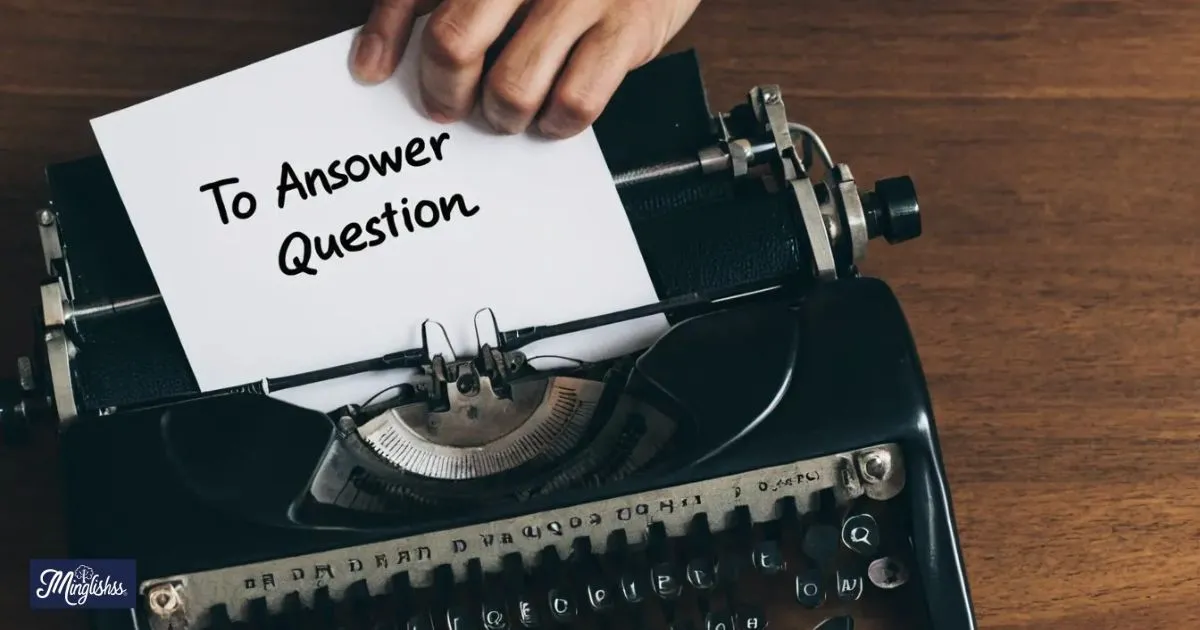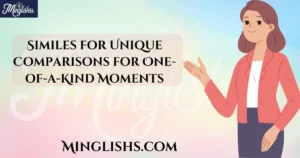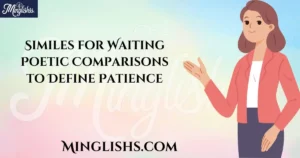“If you’re looking for fresh, polished ways to respond effectively, you’ve come to the right place!”
In conversations, meetings, or emails, finding the right words to respond to a question is crucial. The way you frame your answer can set the tone of the interaction, making it either more engaging or flat. Whether you’re in a professional setting, answering a friend, or communicating with a broader audience, using varied expressions instead of default phrases like “To answer your question” can make your response sound fresh and thoughtful.
This blog provides 35 alternative expressions for “to answer your question,” each designed to suit different contexts and tones. These suggestions will not only help you avoid repetition but will also elevate the quality of your responses. For anyone aiming to communicate clearly and effectively, learning alternative phrases and using them well can make a huge difference.
Explore these options to add variety to your responses, enhance your communication skills, and leave a lasting impression. Each suggestion comes with scenarios, explanations, and tips to guide you in selecting the best fit for your specific context. From casual to formal settings, there’s an ideal phrase waiting for you here.
Different Ways to Say “To Answer Your Question”
1. “In response to your inquiry…”
Scenario: Olivia is addressing a query from her manager regarding project timelines.
Explanation: This is a formal phrase that works well in professional contexts. It acknowledges the question respectfully, making it ideal for emails or formal responses.
Additional Tip: Use this phrase when you want to convey a thoughtful, well-structured reply in a corporate or official environment.
2. “Regarding what you asked…”
Scenario: Kevin is explaining project details to a colleague who inquired about a specific task.
Explanation: This phrase is direct yet friendly, suitable for semi-formal conversations. It sounds natural and is versatile across various professional interactions.
Additional Tip: This phrase works well in email communication or casual professional chats, adding clarity without sounding overly formal.
3. “To address your point…”
Scenario: Sarah is in a team meeting and wants to provide insight on a topic raised by a team member.
Explanation: This expression acknowledges a specific point, making it great for discussions where you’re addressing a concern directly.
Additional Tip: Use this in meetings to keep responses focused and ensure the conversation stays on track.
4. “In answer to that…”
Scenario: Jack is responding to a question during a Q&A session at a seminar.
Explanation: This phrase has a conversational feel, perfect for live discussions or presentations. It keeps the response clear and connected.
Additional Tip: Great for live sessions where you want to sound engaging yet maintain a professional tone.
5. “As you wanted to know…”
Scenario: Emma is replying to a client’s question in an email.
Explanation: This approach adds a personal touch, making it ideal for customer service interactions. It acknowledges the client’s curiosity directly.
Additional Tip: Use this in customer-facing roles to make responses feel attentive and customer-centric.
6. “About that…”
Scenario: John is having a casual conversation with a colleague who asked about an ongoing project.
Explanation: Short and to the point, this phrase is ideal for informal settings where brevity is preferred.
Additional Tip: Ideal for informal, brief answers when too much detail isn’t necessary.
7. “On that note…”
Scenario: Laura is addressing a question in a team brainstorming session.
Explanation: This is a conversational way to link to the question, making it well-suited for collaborative environments.
Additional Tip: Use it to keep responses flowing naturally in informal or collaborative discussions.
8. “In relation to your question…”
Scenario: Mark is replying to a supervisor’s query via email.
Explanation: This is a versatile and polite way to begin answering, perfect for emails and more formal situations.
Additional Tip: Use this in business emails to convey professionalism and clarity.
9. “To shed light on that…”
Scenario: Sophie is responding to a student’s question in a classroom.
Explanation: A friendly way to start an answer, this phrase works well in educational settings or when explaining something complex.
Additional Tip: Great for educational contexts where a detailed answer is needed.
10. “As per your question…”
Scenario: Liam is responding to a question from his boss in a report.
Explanation: This phrase is professional and acknowledges the question formally. It works well in structured or official responses.
Additional Tip: Ideal for formal documents or reports to maintain a structured response.
11. “To provide some clarity…”
Scenario: Julia is addressing a client’s question about the timeline for a new project.
Explanation: This phrase is ideal for providing clear, straightforward answers, especially when clarification is needed. It’s both polite and direct.
Additional Tip: Use this phrase when you want to clear up any ambiguity in a response, especially in client interactions.
Other Ways to Say Token of Appreciation
12. “In regard to your inquiry…”
Scenario: Noah is responding to a customer’s question in a formal email.
Explanation: A slightly formal expression, this phrase is great for written responses, particularly in emails and customer service replies.
Additional Tip: This is best used in situations where a formal tone is needed, as it conveys professionalism.
13. “To follow up on that…”
Scenario: Emma is in a meeting and wants to answer a team member’s question from earlier.
Explanation: This phrase is casual yet respectful, perfect for scenarios where the question needs to be readdressed or clarified.
Additional Tip: Ideal for team meetings where you’re circling back to previously raised questions.
14. “Touching on your question…”
Scenario: Ben is addressing a specific point during a training session.
Explanation: This expression acknowledges the question with a friendly, conversational tone, making it great for informal discussions.
Additional Tip: Use this in educational or training settings to keep responses engaging and approachable.
15. “On that subject…”
Scenario: Zoe is responding to a colleague’s question in a brainstorming session.
Explanation: This phrase works well to transition smoothly into an answer, especially in collaborative discussions.
Additional Tip: It’s great for meetings to maintain a flowing conversation.
16. “Based on what you asked…”
Scenario: Liam is replying to a client’s inquiry about the product features.
Explanation: This phrase offers a personalized response, making it suitable for customer support.
Additional Tip: Use this in client interactions to make responses feel tailored and attentive.
17. “With reference to your question…”
Scenario: Sarah is answering a formal email from a project stakeholder.
Explanation: This is a formal phrase that’s perfect for business or formal emails.
Additional Tip: This phrase works well when you want to maintain a professional tone in your response.
18. “To give you more insight…”
Scenario: David is answering a question about company policy during an onboarding session.
Explanation: This phrase signals that you’re offering a deeper explanation, ideal for more complex or detailed questions.
Additional Tip: Great for scenarios where you need to provide additional context.
19. “To clarify things…”
Scenario: Mia is replying to a team member who asked for clarification on a project deadline.
Explanation: This phrase is friendly and useful when you want to clear up any potential confusion.
Additional Tip: Use it in both casual and semi-formal settings to keep responses clear and concise.
20. “In response to that…”
Scenario: John is responding to a colleague during a quick Q&A session.
Explanation: This phrase is short and versatile, suitable for quick and direct answers.
Additional Tip: Great for situations where time is limited, like meetings or live sessions.
21. “Referring to your earlier point…”
Scenario: Olivia is addressing a question raised at the beginning of a meeting.
Explanation: This phrase shows you’re attentive and makes it easy to refer back to previous points in discussions.
Additional Tip: Ideal for keeping track of questions asked earlier in conversations.
22. “I’d be happy to elaborate…”
Scenario: Ethan is responding to a client’s detailed question about service offerings.
Explanation: This phrase conveys a willingness to explain in detail, perfect for customer interactions.
Additional Tip: Use this phrase in customer service to show openness and willingness to assist.
23. “On that question…”
Scenario: Anna is in a panel discussion and addresses a question raised by the audience.
Explanation: A straightforward response that maintains focus on the question, making it good for public discussions.
Additional Tip: Use this in presentations or Q&A sessions to keep responses focused.
24. “Circling back to your question…”
Scenario: Nathan is in a meeting and revisiting an earlier question raised by his manager.
Explanation: This phrase shows attentiveness, especially useful in discussions where previous points need clarification.
Additional Tip: Ideal for team meetings to ensure all queries are addressed.
25. “For your understanding…”
Scenario: Chloe is responding to a technical question from a client.
Explanation: This phrase sets up an informative response, making it suitable for explaining complex topics.
Additional Tip: Great for customer service responses to show empathy and ensure clarity.
26. “As for your question…”
Scenario: Jake is replying to a friend who asked about weekend plans.
Explanation: This phrase has a casual tone, making it perfect for informal settings.
Additional Tip: Use this phrase in everyday conversations to keep things friendly and direct.
27. “I’d like to address that…”
Scenario: Maria is in a panel discussion and wants to respond to a question from the audience.
Explanation: This phrase is polite and engaging, ideal for presentations or public speaking.
Additional Tip: Perfect for formal events where you want to respond clearly and attentively.
28. “Let’s talk about…”
Scenario: Lucas is in a training session and wants to answer a question in depth.
Explanation: This is a warm and approachable way to dive into a response, good for interactive settings.
Additional Tip: Useful in discussions where you want to create a conversational atmosphere.
29. “Answering your question directly…”
Scenario: Sophia is answering a direct question from her manager.
Explanation: This phrase is straightforward, ideal for formal situations where brevity is preferred.
Additional Tip: Best used when a direct answer is required without extra detail.
30. “Now, addressing your concern…”
Scenario: Alex is responding to a concern raised by a team member.
Explanation: This phrase is respectful and attentive, suitable for addressing concerns directly.
Additional Tip: Ideal in meetings where you need to show attentiveness to specific questions.
31. “Moving on to your question…”
Scenario: Grace is in a panel discussion and wants to answer a specific question from the audience.
Explanation: This phrase keeps things on track, suitable for transitioning between questions.
Additional Tip: Great for live sessions where pacing and flow are important.
32. “To directly respond…”
Scenario: Ethan is replying to a straightforward question during a webinar.
Explanation: A simple and direct phrase, great for quickly addressing a question without added context.
Additional Tip: Useful in presentations or webinars where quick responses are expected.
33. “That being said, here’s my answer…”
Scenario: Lily is addressing a nuanced question from her manager.
Explanation: This phrase allows for a smooth transition from one topic to the answer, adding a thoughtful tone.
Additional Tip: Best for responses that need to build on previously mentioned ideas.
34. “Touching base on that…”
Scenario: Jason is in a team discussion and revisiting a topic raised earlier.
Explanation: This phrase is casual and engaging, suitable for team discussions or informal meetings.
Additional Tip: Great for encouraging ongoing dialogue within a team setting.
35. “As you wanted clarification…”
Scenario: Mia is responding to a client’s question about the next steps in a project.
Explanation: This phrase is polite and shows attentiveness to the client’s needs.
Additional Tip: Perfect for client interactions where you want to show responsiveness and understanding.
Pros and Cons of Using Alternative Phrases
Pros
- Adds Variety: Using different phrases keeps conversations engaging and fresh, avoiding monotony.
- Context-Specific: Different expressions can be tailored to the formality or tone required.
- Shows Consideration: Varying responses can convey that you’ve thought about the answer, adding a layer of thoughtfulness.
Cons
- Can Sound Forced: In casual settings, some phrases might seem overly formal if not used appropriately.
- May Confuse Some Audiences: Too many variations in responses can sometimes confuse listeners if they expect straightforward answers.
Conclusion
Expanding your vocabulary with varied expressions for “to answer your question” can enhance your communication skills, especially in professional settings. Each alternative phrase has its unique tone and suitability for specific scenarios, from formal business interactions to casual exchanges.
By thoughtfully selecting phrases based on context, you can deliver responses that are both engaging and impactful. Try using some of these phrases in your next conversation and notice the difference it makes in your communication clarity and style.
Answers to Key Question “To answer your question”
1. Why should I use alternatives to “To answer your question”?
Using different phrases keeps responses fresh and shows attentiveness, enhancing communication skills.
2. Are there specific phrases that work best in formal settings?
Yes, phrases like “In response to your inquiry…” and “With reference to your question…” are ideal for formal or professional interactions.
3. Can I use these phrases in casual conversations?
Absolutely. Phrases like “About that…” and “As for your question…” work well in informal settings.
4. How can I choose the right phrase?
Consider the formality, audience, and tone needed in your response to select a suitable phrase.
5. Will varying my responses improve my communication skills?
Yes, it adds versatility, prevents monotony, and helps tailor responses to the context, making your communication more effective.

Hi, I’m Lauren Reynolds: I bring creativity to English lessons, mixing fun with learning. My goal is to inspire students to explore and enjoy the language.










